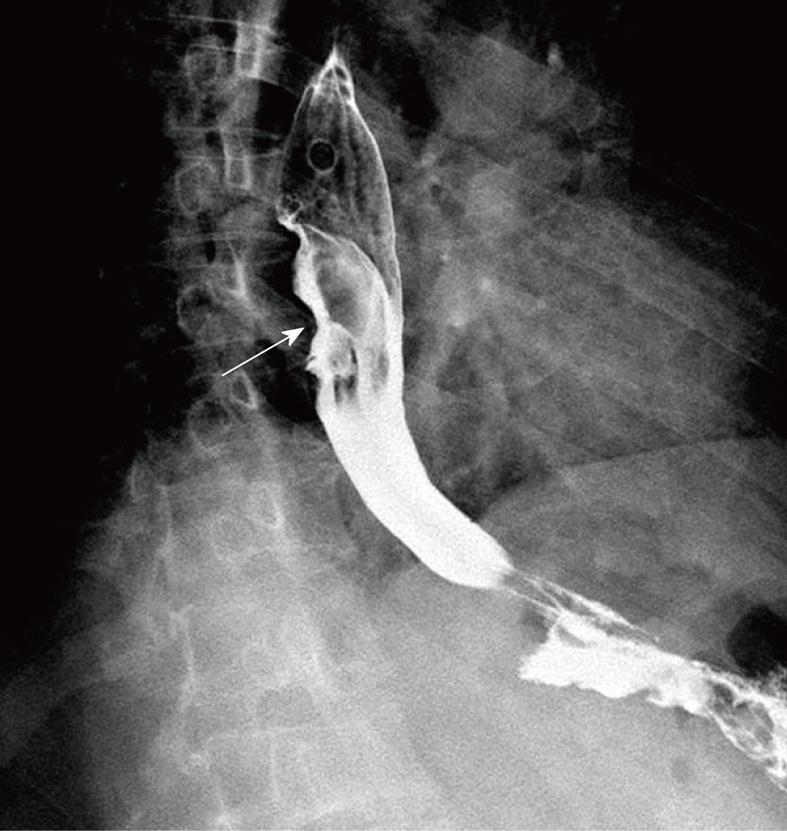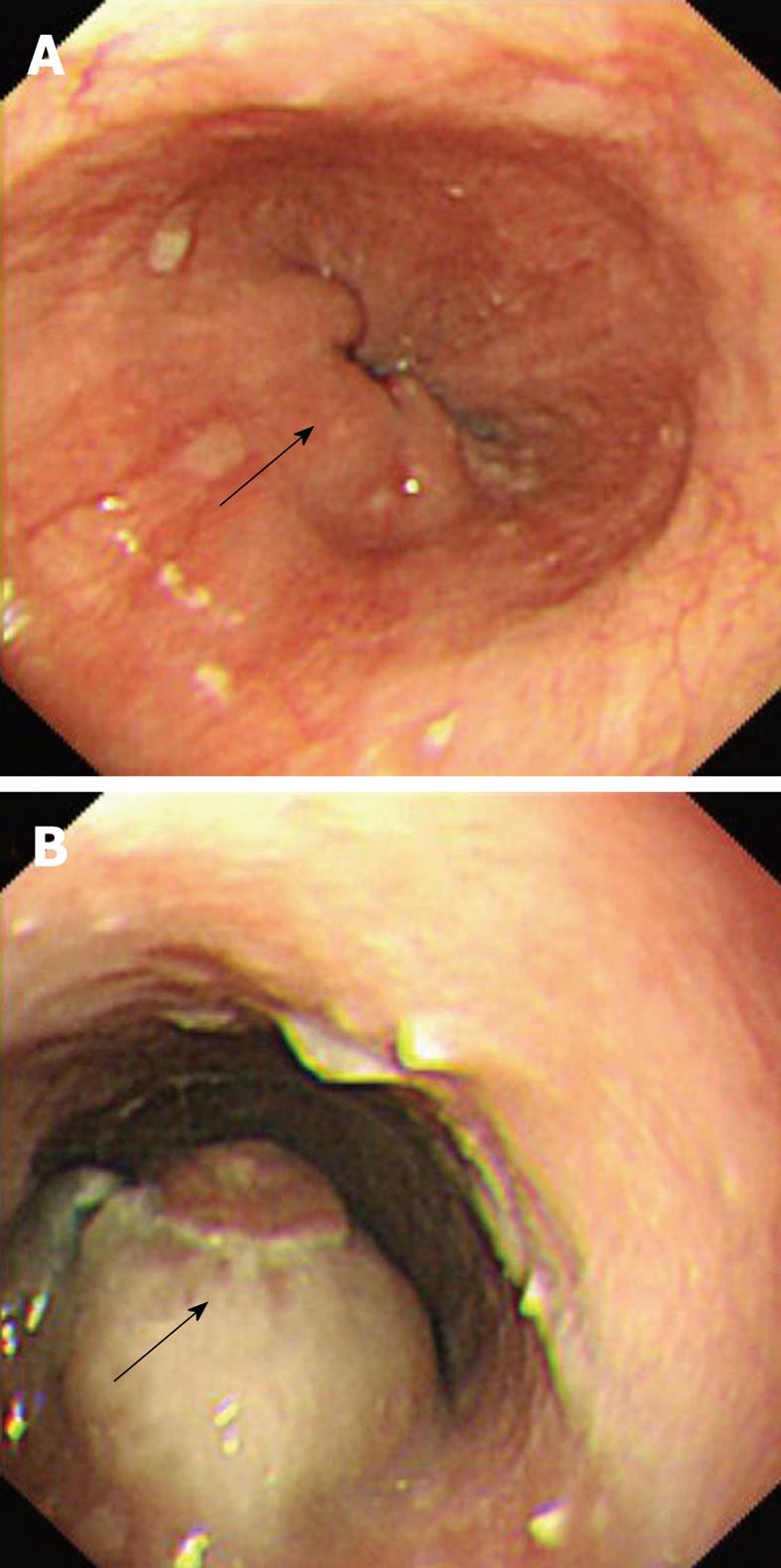Copyright
©2010 Baishideng Publishing Group Co.
World J Radiol. Aug 28, 2010; 2(8): 334-338
Published online Aug 28, 2010. doi: 10.4329/wjr.v2.i8.334
Published online Aug 28, 2010. doi: 10.4329/wjr.v2.i8.334
Figure 1 Barium esophagogram shows irregular outline and multiple filling defects (arrow), with short segment narrowing of the distal segment of the esophagus involving right side posterolaterally.
Figure 2 Computed tomography scan of the thorax.
A: Plain computed tomography (CT) showing asymmetrical thickening of the esophageal wall (white arrow) with maintenance of the surrounding fat plane. No mediastinal lymphadenopathy is seen; B: Contrast-enhanced CT shows moderate enhancement of the lesion (white arrow); C: Coronal multiplanar reconstructed (MPR) CT image demonstrating the thickened esophagus (white arrow); D: Sagittal MPR CT image showing extension of the lesion (between two arrows).
Figure 3 Photomicrograph of the biopsy specimen demonstrating large transformed lymphoid cells with vesicular nuclei and prominent nucleoli, which was suggestive of diffuse large B-cell lymphoma (hematoxylin and eosin, × 200).
Figure 4 Esophagogastroduodenoscopy (A and B) showing multiple solid, firm nodular lesions in the lower esophagus.
Overlying mucosa appearing relatively normal (black arrows).
- Citation: Ghimire P, Wu GY, Zhu L. Primary esophageal lymphoma in immunocompetent patients: Two case reports and literature review. World J Radiol 2010; 2(8): 334-338
- URL: https://www.wjgnet.com/1949-8470/full/v2/i8/334.htm
- DOI: https://dx.doi.org/10.4329/wjr.v2.i8.334












